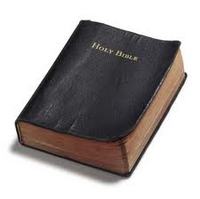
of opinions and thoughts on the Bible. On one end of the spectrum you have
popular authors like Dan Brown, who wrote the Da Vinci Code. This end of the spectrum sees the Bible as a
cultural construction, something that reflects church politics and a
history of oppression. Here, the Bible is merely the work of flawed human
beings. On the other end of the spectrum, you have people who read the Bible as
if it is a supernatural document without any human involvement, where every
word can be lifted out verbatim and applied to our lives because it is the word
of God. The problem with this end of the spectrum is that God’s word ends up
being misapplied and telling us what we want to hear. Say, for example, you
wanted to argue that God was a large bird in the sky. You could quote Psalm
17:8: “hide me in the shadow of your wings,” which, of course, would be missing
the point all together. The truth of what the Bible is lies in between these
two extremes. In other words, the Bible is both the work of human beings and
the Word of God.
So if it isn’t merely a
culturally constructed and deeply flawed human project, and if it isn’t God via
dictation, what is it?
Factually speaking, the (Protestant) Bible is 66 books gathered together over the course of thousands of years, written on three different continents in three different languages by an incredibly diverse array of people. Moreover, as Christians see it, the Bible–start to finish–tells the story of God’s work in the world, centered on the person and work of Jesus Christ. Despite the diversity of thought, time period, language, authorship, style, and location among the books of the Bible, it is also a unified collection telling a unified story about the work of God in the world. Throughout the books of the Old and New Testament, a common story emerges. The story told by Scripture as a whole is a story of creation, fall, and redemption. Over and over again, through a glorious multiplicity of forms and viewpoints, the Bible proclaims
1. that God is Lord over all creation, and therefore of human beings;
2. that humans have fallen away from God or rebelled against God;
3. that God is redeeming and restoring all of creation, including humans, to a place of dignity and purpose.
The Bible is a collection of books that serves the church as an authoritative witness to God’s consistent, redemptive work within the world. This story culminates in the story of Jesus, because through Jesus’ death and resurrection, God enables creation to be redeemed.
Check back next week for more on how these particular 66 books came to be included in the Protestant “canon” of Scripture…
